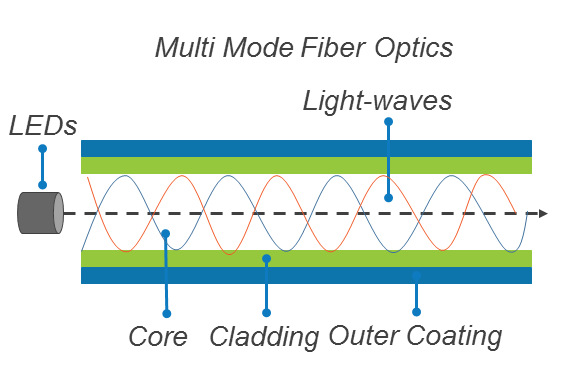BDCOM 101 – Getting down to the basics of Fibre Optics
- Julia
- Latest News
- 0 likes
- 1803 views
- 0 comments
Missed out on attending the BDCOM product launch at one of our branches? Don’t worry, we understand that your time is precious and that’s why we have summarised the product launch into a blog series! Over the next three weeks we’ll be covering the following with you:
- This week we’ll provide you with a bit of background on Fibre Optics.
- Next week we’ll explain the different types of Optical Networks along with GPON and EPON.
- Lastly, we’ll cover the basic components required in an EPON solution.
Let’s start off with the basics.
What is Fibre Optics and how does it work?
Fibre optics is optically pure glass as thin as a human hair that carries digital information using light. A basic fibre optic cable is comprised out of three parts, namely:
- The core – this is the thin centre of the fibre where the light travels.
- The cladding – this is material that surrounds the core and reflects light back into the core without absorbing any of the light (this process is also known as total internal reflection).
- And lastly, the outer coating that surrounds the cladding – this is a plastic coating that protects the fibre from damage and moisture.
Fibre optics are further divided into two main modes, namely single-mode and multimode fibre optics.
Single Mode
Single-mode fibre optics has a smaller diametric core that allows for only one mode of light to propagate through its core. SM (single mode) is typically used with equipment that uses lasers as the light source and as the light propagates through the core, the number of reflections created are less, meaning you have less attenuation or loss, this allows for SM fibres to be used in long-range deployments and in an EPON solution, it can cover up to 20 kilometres.

Multi-Mode
MM or multi-mode fibre optics has a larger diametric core that allows multiple modes of light to propagate simultaneously. Each light mode as a marginally different reflection angle inside the core and MM is typically used with equipment that uses LED as the light source. As the multiple modes of light propagate through the MM core, the number of reflections created is more, meaning that you have more attenuation or loss, because of this, MM is typically used in short-range deployments.

What are the advantages of using Fibre Optics

More Capacity
When comparing a fibre optic solution to conventional copper and even a wireless system, there are significant differences between these networks and first and foremost would be capacity. Fibre Optics provide greater bandwidth when compared to conventional copper and even wireless systems.
Less Attenuation
Fibre optic transmissions result in less attenuation. In a wireless PTP or even PtMP network, RF signals do attenuation due to a phenomenon known as free space path loss. Fibre optics also has attenuation, but much less when compared to a wireless and even conventional copper infrastructure.
Resistant to Electromagnetic Interference
Fibre Optic cables are also impervious to electromagnetic interference. In a wireless network, noise, floors, interference and other environmental factors can also adversely impact the RF signal. However, fibre optics is impervious to these factors.
Strong
Lastly, Fibre Optic cables do not break as easily as conventional copper. It is a matter of installing your fibre optic network and forgetting about it unless someone decides to dig a hole and accidentally digs up your fibre along with it.
Don’t miss next week’s BDCOM 101 blog post when we explain the various types of Optical Networks available!



Comments
View Comments